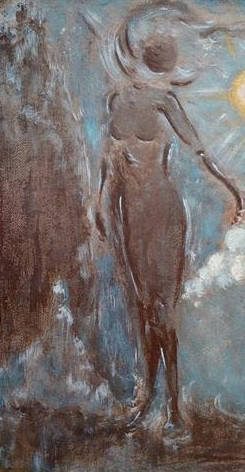The following poems are part of a manuscript that explores the history and future of uranium mining in northern Saskatchewan. The voices that form the recurrent chorus of women are inspired by testimony found in transcripts from public hearings held throughout Saskatchewan when the uranium industry was expanding in the early 1990s.
Enter the Transcripts
A subterranean stream, a long reel of altered words, heard and reinterpreted, distant static in an accidentally tapped land line.
Young women in federal offices, their names signed at the back of each text, attest they transcribed these words to the best of their abilities, each parenthetical inaudible not a failure, an admission, the best they could do, so many elders in translation, many layers of mishearing already altering each speech, tipping the process toward a precipice, misprision.
Read at your own risk. Words break down over time, travel from mind to mouth to ear to eye. What happens in between: erosion, decay, necrosis.
Women, Meadow Lake
Some see this province as straight lines, landlocked lakes of flax, highways running past steamrolled horizon, grid road, rail track.
But just as the echoes of the Cypress Hills near Swift Current spool off the tongue of a billion-year-old vibration, the northern landscape troubles this mirage, undulates—not a heat wave, a watermark, rippling surface. Intricacy of riverwork, latticed waterways, a system of lakes unlocked, knotted here and there, pulse suppressed, energy tapped for cash, light.
Switches, ignitions. What comes from where?
So fixed we are on the dirtiest pits, we speak little about real needs. What we take every day without asking. Assumptions we make about survival, sustenance, nourishment, luxury.
The north is not a barren land. Food grows in the boreal forest: woodland caribou, moose, spruce grouse, trout. Blueberry, cloudberry, bearberry, mossberry.
Juniper. Currants. Indigo milk caps, morels, chanterelles. Wild rice. Lichen. People have fed and healed here for thousands of years.
Real need is perceived by the heart and gut: edible berry, potable water. Returning herd or spawning run. Body’s response to the rhythms around us. Not the mind’s design, not the thought that nags, How much? How much? Enough.
Women, Candle Lake

Mountain Woman (detail) by Melanie Best
Let those who use it bear its waste, those who live with the wounds heal the land.
We need generations to keep and guard our decommissioned mines and deep geological repositories. Beacons to mark where we buried our glassified thorium. Our mausoleums of light.
We’ve rearranged whole ore bodies, used them as fuel, used them in fields of fluorescence, in cancer treatments.
We’ve irradiated seeds, detonated weapons: atmospheric, oceanic, underground. Tests, tests, tests.
How we pass, how we fail. How we pass, fail, pass.

